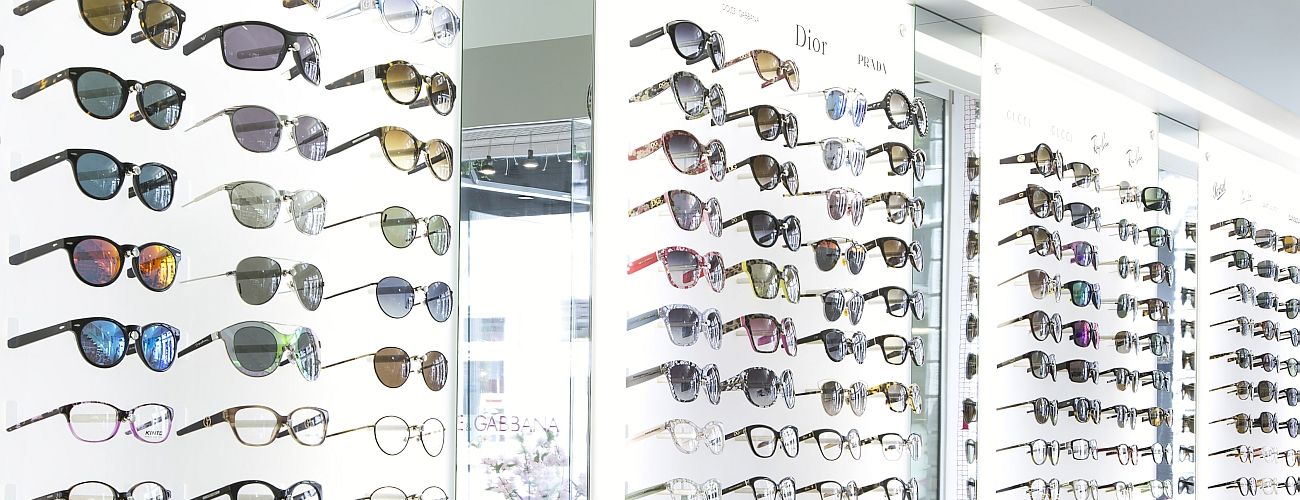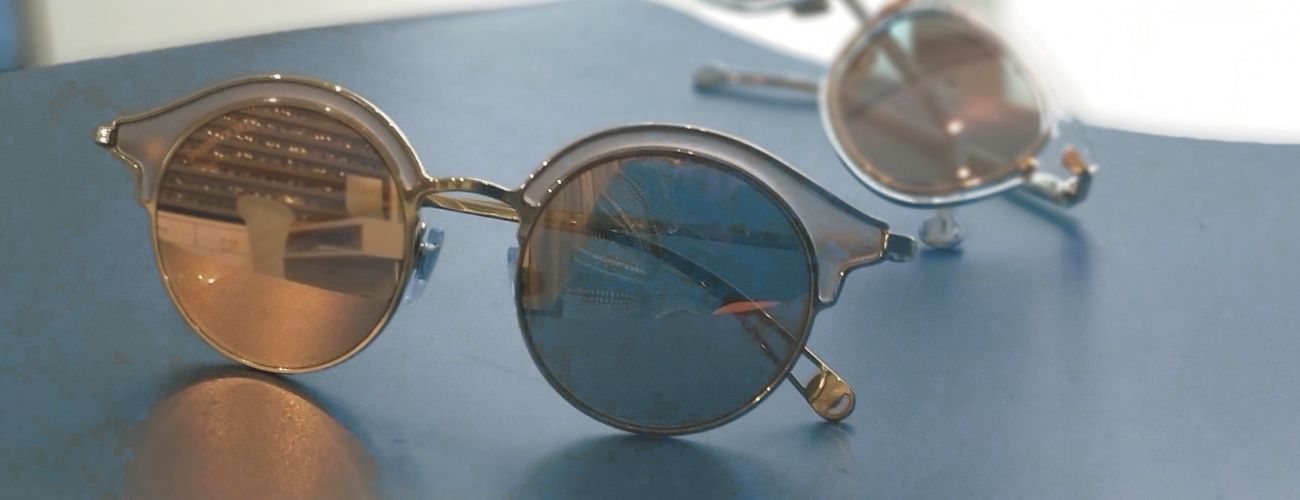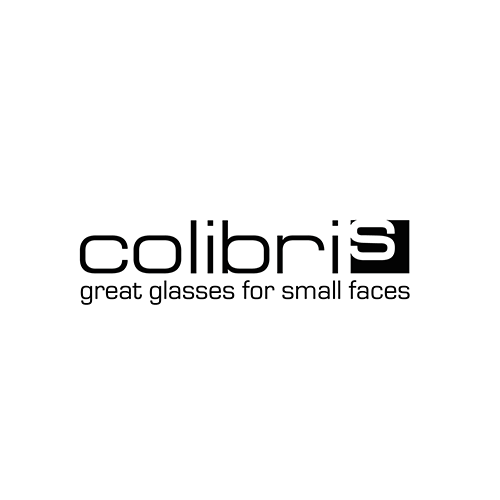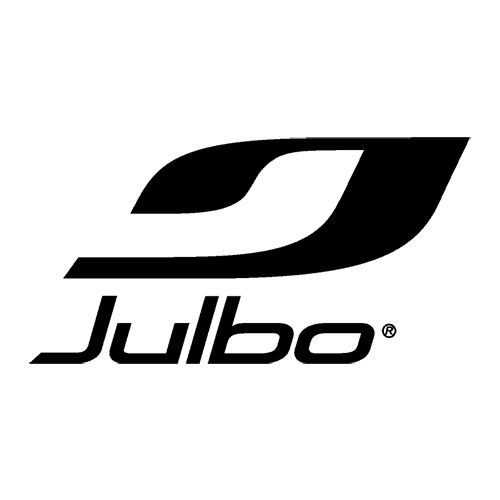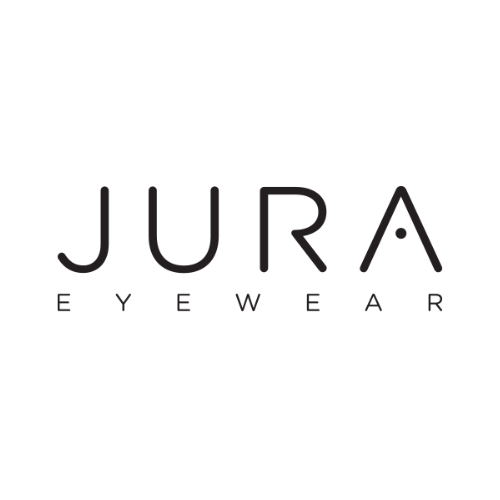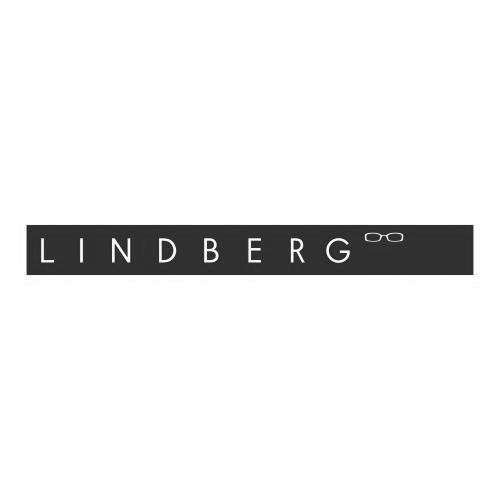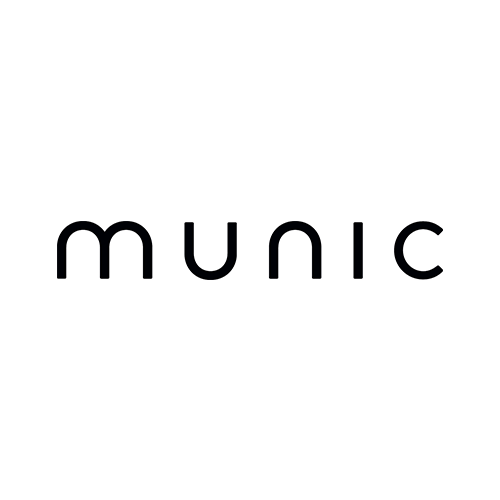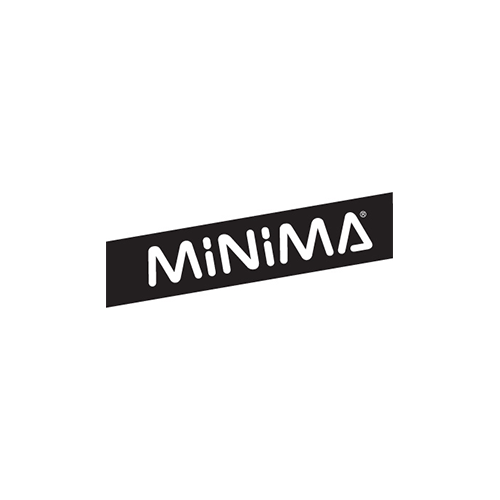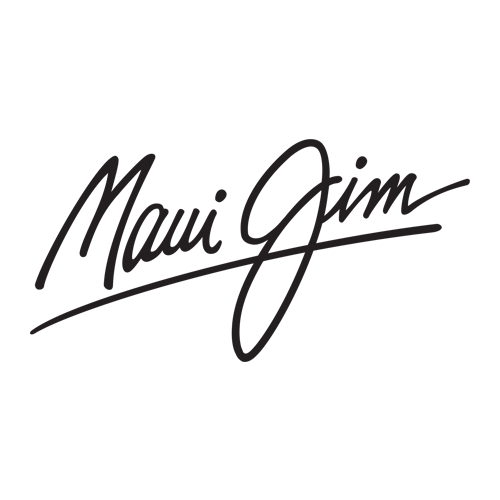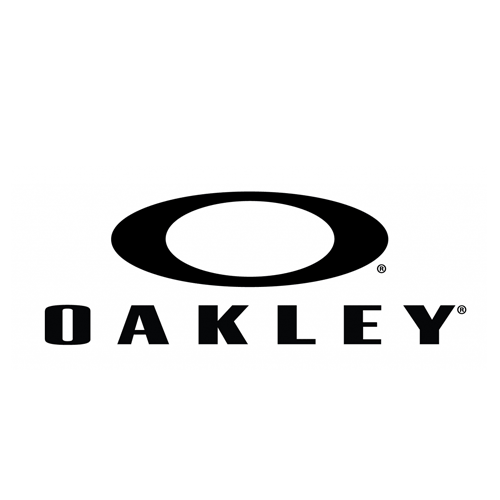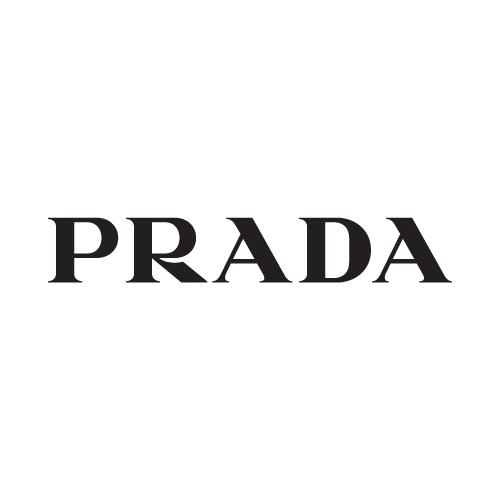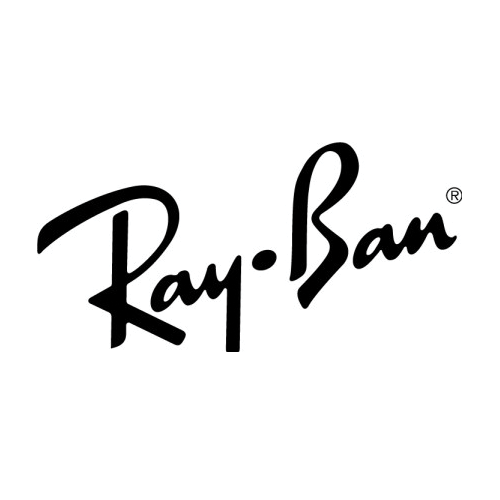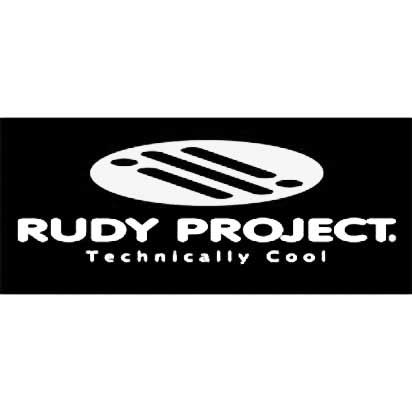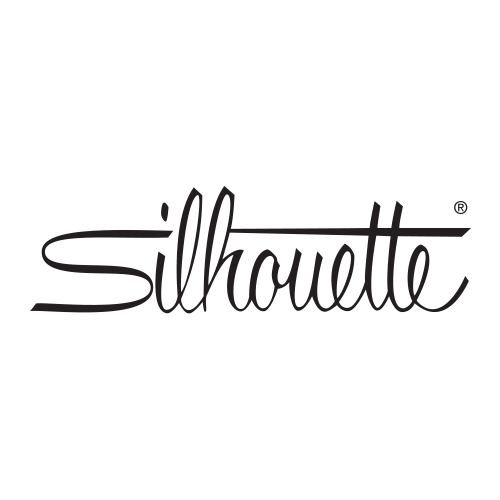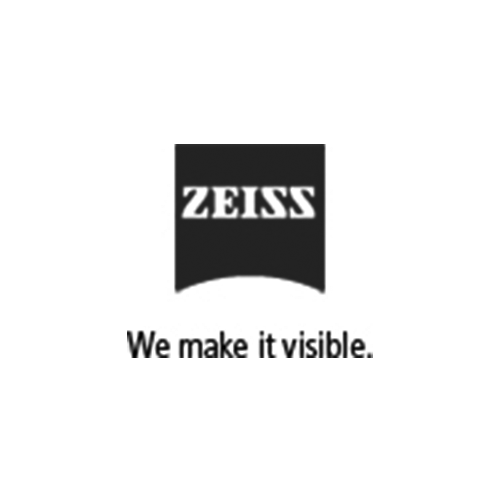
Sunglasses with prescription lenses
Milan, Paris or… Scheerer Optik??
Our sunglass portfolio includes the following brands:
- Colibri's
- Dolce Gabbana
- Evil Eye
- Giorgio Armani
- Julbo
- Jura
- Lindberg
- Maui Jim
- Oakley
- Persol
- Prada
- Ray Ban
- Rudy Project
- Silhouette
- Siols
- sowie viele weitere…
Your specialist for sunglasses in Zurich
Scheerer Optik is your optician right at Zurich main station. We are happy to introduce you to our wide selection of more than 800 sunglasses – tinted only or with correction!
We know the latest trends and how to make you shine! In order to achieve perfect wearing comfort, we adjust every model on-site.
For skiers, pilots and water sports enthusiasts we have polarizing lenses that reduce reflections on snow, water or while driving. Better vision ensures more safety. A 100% UV protection is guaranteed with every model. Our UV testing machine will give you proof.
Our offers:
- Glasses or sunglasses with long- OR short-sighted prescription lenses for 330 CHF* (availability on request)
- Glasses or sunglasses with long- AND short-sighted prescription lenses for 990 CHF* (availability on request)
Protect your eyes!
Solar radiation, called the radiation spectrum, is very high on energy. Fortunately, the Earth’s atmosphere absorbs a large part of this radiation. Nevertheless, the radiation is strong enough, that the eye, including eyelids, cornea, and conjunctiva, needs additional protection. In addition to the radiation transmitted by the atmosphere, the reflectivity of the environment must be taken into account.
| Visible light: | UVA | UVB | |
|---|---|---|---|
| Asphalt | 7% | ||
| Gras & Laubwald | 15% | 2% | 2% |
| Wasser Winkel 40°-50° | 10% | ||
| Wasser Winkel ca.20° | 25% | ||
| Sand | 25% | 13% | 9% |
| Schnee | 80% | 94% | 88% |
| Wolken je nach Art | 40% - 90% |
Damage on conjunctiva, cornea, retina and eyelids occurs in response to radiation. In addition, UV rays can influence the development of a cataract, which results in an earlier onset of presbyopia.
(Further details on the individual topics at the end of this post below 1*)
Prevention of eye damage:
The damage caused by unprotected exposure to the sun is not trivial. Wearing sunglasses sets a biological control loop in motion. By wearing a lens with an absorption of 80 % for visible light, the previously constricted pupil dilates. However, the control circuit only detects the brightness on the retina and not the UV radiation. With the pupil area now dilated by approx. 70 %, the same dose has a stronger effect than before. Just one reason why specialist advice is crucial! We ask the right questions:
• Where and how long should protective sunglasses be worn?
• What activity is performed?
• How much of work and free time is spent outdoors?
• Is a correction required?
• Are there any cases of cataract or macular degeneration in your family?
A brief look at the conjunctiva, the iris and the skin type of our customers provide us with the required information for a consultation.
Patients with early cataract or corneal opacity notice more glare. Also in this case, lenses with a special tint can help.
In cases of severe myopia, the ocular fundus reflects brighter and thus the eye becomes more sensitive to glare. In this case, darker sunglass lenses are highly recommended. In addition to the indispensable protective wraparound sunglasses, we advise you to protect your head with appropriate headgear.
Protection through contact lenses:
UV-absorbing contact lenses also provide protection. Soft contact lenses particularly protect against incident from the outermost periphery before the radiation reaches the cornea, eye lens and retina. However, eyelids and conjunctiva remain unprotected. For certain outdoor sports, sunglasses with correction shouldn’t be worn because of the risk of injury (full-contact sports, windsurfing etc.). It is nevertheless recommended to wear contact lenses with low UVB and UVA transmittance in order to avoid consequential damage. This concerns all athletes, including those who don’t require correction glasses.
No question: strong glare has negative impacts on visual performance and poses a risk of accidents. UV-, UVB- and blue radiation increases the risk of eye disease. Essential colors and halftones, necessary for the practice of professional or leisure activities, should not be suppressed by protective lenses or contact lenses. They should be preserved and, if possible, enhanced.
1a*)
Cornea damage
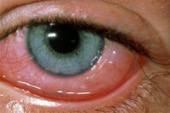
Corneal damage occurs as a result of photokeratitis, popularly known as snow blindness, or in a mild form of the so-called conjunctivitis caused by light irradiationLichtbindehautentzündung.
The unprotected eye reacts primarily to UV radiation. For every 1000 meters of altitude, the radiation is increased by up to 20%. Particularly the first layer of the cornea is affected. Severe pain occurs after about five to ten hours and subsides after about one or two days after treatment.
1b*)
UV radiation affects the development of cataract
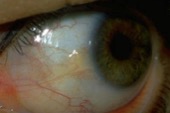
Cataract can be caused by UV radiation. Of course, hereditary factors such as diabetes, unhealthy diet, medication, nicotine consumption and trauma can as well be risk factors.
1c*)
Eyelids
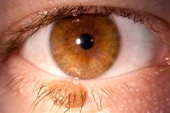
Radiation, mainly in the UV range, can cause tumors and benign basal cell carcinomas but also malignant melanomas. Hereditary factors have an influence, but UV radiation is the primary cause. Increased UV exposure in childhood and adolescence is considered to be the cause of malignant melanoma.
UV radiation affects the development of cataract
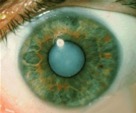
Cataract can be caused by UV radiation. Of course, hereditary factors such as diabetes, unhealthy diet, medication, nicotine consumption and trauma can as well be risk factors.
1c*)
Early presbyopia and other alleged damage
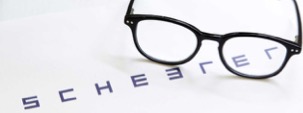
In countries with high UV value, the negative influence of UV radiation is often observed in younger age groups. As a result, presbyopia appears early. The study situation is still too uncertain for a conclusive statement.
However, it has been proven that UV radiation promotes the development of inflammation of the choroid, ciliary body and iris.
1f*)
Retina damage caused by radiation
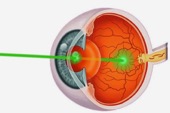
The optical refraction of the ocular media causes radiation to be concentrated on the retina. Irradiation values are about 150 times greater than on uncovered skin. Consequences of viewing a solar eclipse without adequate protective eye wear are well known. Solar maculopathy occurs when protection is inadequate, which results in mild to complete central vision loss. Immediate treatment is of paramount importance. However, treatment is difficult and sometimes unsuccessful. Galileo Galilei apparently suffered from this condition after his sun observations with a telescope. This extreme case occurs rarely because of the rarity of a solar eclipse and medial enlightenment.
However, damage already occurs when radiation levels are slightly above biological defenses. Photochemical damage concerning visible spectrum describes blue damage on the retina. With a correlative disposition, it is considered to be partly responsible for macular degeneration. In children, unlike adults, UVA and UVB radiation is not absorbed by the media located in front of the retina. Therefore, children are more at risk.
1d*)
Pterygium
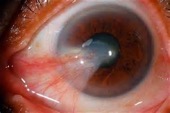
The pterygium is a benign vascular proliferation that is visible on the conjunctiva. The conjunctiva is doubled starting from the nasal lid angle and has the shape of an elongated triangle, the head of which is fused with the cornea. Growth to the corneal center is rare. People who grew up in latitudes below 30° tend to be at increased risk of developing it. The risk of developing a pterygium is about five times higher in people living in rural areas than for urban dwellers. High temperatures and dry environment also promote the development and progression of a pterygium. Artificial tears, UV-absorbing sunglasses and head covering offer good protection.
Address
Bahnhofplatz 9
8001 Zürich
Tel: 044 211 82 22
WhatsApp / Voicemail: 079 837 9009
E-mail:
Opening Hours
-
Mon.
11:00–18:30 Uhr
-
Tue., Wed., Fri.9:00–18:30 Uhr
-
Thu.9:00–18:30 Uhr
-
Sat.9:00–16:30 Uhr
© 1998 - 2022 Scheerer Optik. Design by Webdesign Vision

